Photo
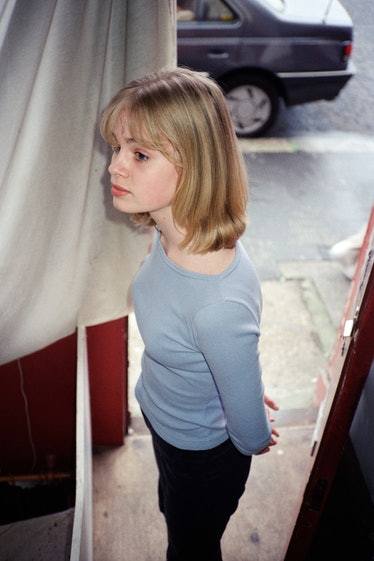

Juergen Teller: Go Sees vs Best Performances
Elliot Wright
Juergen Teller is a photographer infatuated with the beauty of imperfection. Anyone who steps in front of his camera, be they a professional model, friend, family member, or stranger, is treated with the same impartial rawness. Teller’s conceptual series Go Sees and his more recently commissioned series for W Magazine’s Best Performances issue have the same goal (expose the glamorous) yet they differ widely in their aesthetics, the treatment of their subjects, and the emotion they elicit from the viewer.
Teller’s Go Sees, shot intermittently throughout 1998, is arguably one of his most well known body of works. Teller describes it as his “first conceptual project,” despite the fact that his unique perspective as a photographer (depicting unforgiving depictions of brutal reality, particularly that of models and celebrities) was already very present in his work. In Go Sees, Teller photographs every model sent by an agency to audition at his London studio, which he predominantly used for commercial photography commissioned by fashion magazines. As the models exited his studio, he shot a single photograph of them in his doorway, then sent them on their way. Despite the frequent use of unusual angles that occasionally render the photos disorienting and “unprofessional,” they maintain a very specific type of beauty. The film camera lends the girls and their awkwardness a soft, romantic, even nostalgic energy. Although the photos were never retouched or edited, the natural lighting of the exterior of the studio combined with the flash of Teller’s camera tends to light their faces in a flattering way while still revealing a sense of rawness and vulnerability. The camera is almost always looking down at the subjects, making them appear smaller and more diminutive than they already are. The intent of the work is clearly to de-glamorize those whose ambition is to appear glamorous, but never at their own expense. The photos are not necessarily a commentary on the girls themselves, but on the systems, parents, and agencies that led them to Teller’s studio.
Teller’s interest in rawness and reality as a photographer only increased after Go Sees, resulting in his controversial series of photos for W Magazine in the spring of 2021. Tasked with shooting 22 actors for the magazine’s Best Performances issue, Teller decided to utilize an explicitly raw style. Each actor was traditionally styled for the photoshoot with specially chosen clothes and tasteful makeup, but Teller places these subjects in locations so normal they combat any kind of romanticization by the viewer. They stand in front of trees in the dirt and mulch placed between the sidewalk and the car-lined street. Powerlines, chain-linked fences, and cracked concrete are nearly as prominent as the celebrities positioned in front of them. This bizarre effect is enhanced by Teller’s use of what looks like an iPhone camera to shoot each subject straight on (“tourist” style) and his refusal to digital retouch or edit the photos in any way. Often the lighting is unflattering, and the subjects’ expressions range from sensual to confused to angry. The photographs are, frankly, ugly. By placing some of the most well known men and women in a setting so dismally typical and then capturing them with a camera that the majority of people have on their phones, Teller visually destroys the idea of the celebrity. Similar to Go Sees, he de-glamorizes those whose entire job is to appear glamorous.
The largest difference between these two bodies of work, although similar in concept, is the subject of their respective critiques. Go Sees and the W Magazine series are both interested in “exposing” those who are often only seen after donning fancy clothing, posing in a pre-constructed set, and having all noticeable flaws removed by a photo editing program. However, the subjects of Go Sees are young women, none of them recognizable enough to the viewer to register as “celebrities” in any context; They are painfully young, uncomfortable, and fragile-looking. Teller’s “exposing” in this context allows the viewer to extend sympathy to these young women, who’s blatant vulnerability reminds us of our own. In contrast, the celebrity subjects of the W Magazine series are clearly the butt of the joke. These 22 people are some of the most well known in the United States, dressed up in intentionally styled clothing and bedecked with professional makeup artistry, yet here they are, sitting on a small folding chair between two painfully mediocre cars. The result of Teller's “exposing” in this setting is almost clown-like. The celebrity, who we are used to seeing as effortlessly stylish and charming, now seems garish and embarrassing. There is very little joy to be had in looking at these photographs as there is no familiar escapism present. They instead force us to see these celebrities as painfully real people.
When placing “Catherine Maurice, London, 30th March 1999” from Go Sees next to the photo of James Corden, one thing becomes very clear: we are fundamentally unable to extend the same sympathy to James as we can to Catherine. While the latter appear sensitive and self-conscious, the former appear painfully self centered and oblivious. It’s a great example of how Juergen Teller’s photographs, although democratically bent on exposing the rawness of everyone, still create wildly diverse emotional landscapes for his viewers.
Bibliography:
“Juergen Teller.” Lehmann Maupin, https://www.lehmannmaupin.com/artists/juergen-teller.
Public Delivery. “Juergen Teller's Go Sees - Fragile Faces of the Fashion Industry.” Public Delivery, 29 Jan. 2021, https://publicdelivery.org/juergen-teller-go-sees/.
0 notes
Photo
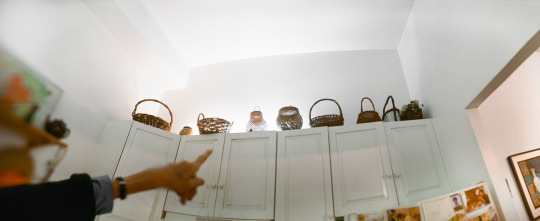
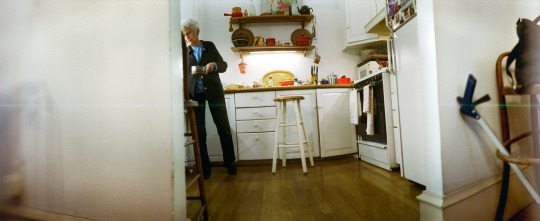
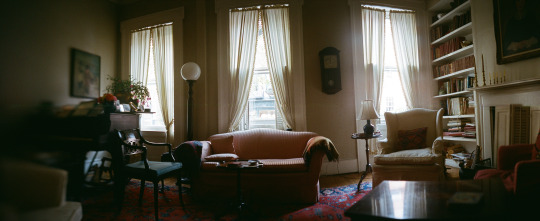
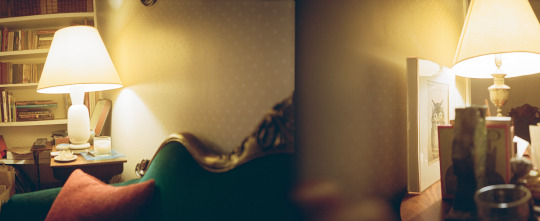
Final Project - Elliot Wright
The house is full, the house is empty. The house is cold, warm, bustling, vacant. The house is everything it’s been in the last 60 years, at the same time, always.
She’s in a fervor, dipping into the kitchen, out of the kitchen, it is Monday, Friday, Sunday morning, afternoon, evening. She’s making tea, tomato soup, a gin and tonic. It’s the 60’s and she’s got toddlers wailing in the other room. It’s 2001 and she’s holding me in her arms. It’s yesterday and we’re reading the real estate section of The New York Times.
The moments congeal into one another as time moves through the house and and through her. The furniture is perpetually un-aging. Her movements around it are practiced. The specifics of the date are indiscernible and irrelevant: she is here. She is everything she has been in the last 90 years, at the same time, always.
0 notes
Text
Final Project Renn Beard-Galati
Growing up between the city and the suburbs, I lived between two different worlds- one that was bustling with energy, and the other that my parents and I found as a getaway. Not until a few years after moving in would visitors call it the town with a tragic past. It took me years to comprehend what happened. I was only 11 years old, when 26 children and teachers were murdered in an elementary school. The town was mourning for the lives lost, for the families who lost their children, and a country that became divided. There was a memorial at the police station and in the village of Sandy Hook. I remember one night, there were cut out angel lanterns that guided people safely back home from paying their respects in the tiny village square. My sister and I took our stuffed animals and laid them on a mound of toys outside of the police station. Those toys were to be buried in a memorial for the children who lost their lives. Newtown was never the same again, but people were ever so nicer and gentler with each other. In my early adult years I started to appreciate and acknowledge the relationships formed with my neighbors and the small businesses. There is so much subject matter to capture in this town and my photographs are only a small glimpse of a day in its life. It was an opportunity for me to reconnect with nature and to tap into the motion of everyone’s daily lives. I chose to work with Portra 400 film because of it’s colorful streaks and clarity. It enabled me to see the town's quality by capturing landscape and intimate settings indoors during the winter and the last hours of the day when the clouds were clearing and the sun was setting. I admired the raw images as much as the edited ones and found it hard to decide which to select. I trusted the process, and accepted uncomfortable social interaction with my subjects, and sometimes told my Dad to stop in the middle of the street so I could take a picture. I struggle with my own identity as it relates to the town. I live here part time, yet I feel a deeper connection to it than I do New York City. Perhaps it is because I identify so strongly with ongoing school massacres and the fact that my sister is a tenth grader at Newtown High School (the same class of children who witnessed and survived the massacre). I wanted to take care in showing Newtown as the everyday small town in America. Yet, I couldn’t leave out the tension of wounds that are a part of its past. My mission was to find and pay proper respect for a town that has had the tenacity to move on, yet capture the vestiges of it’s trauma.
0 notes
Photo
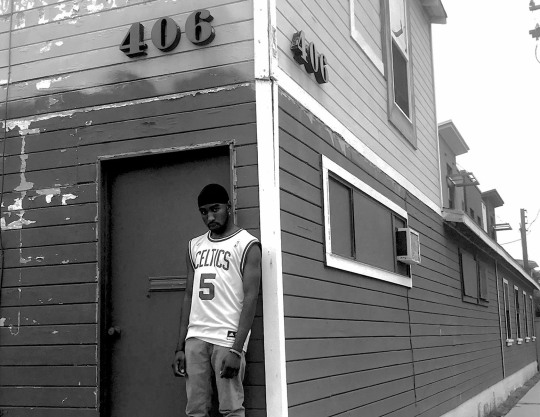
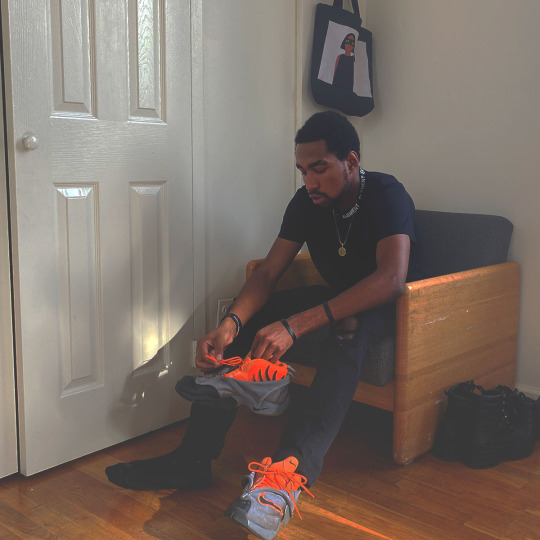

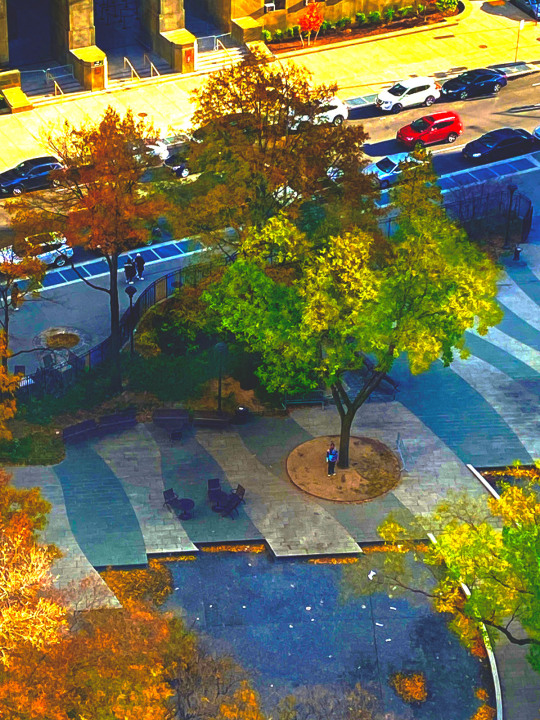

?
Sometimes I don’t know when to let people in or keep them out. I often find myself experimenting with how close or how far I get to those I encounter on a daily basis. Some of whom wish me much success and others who simply play nice in the presence of others…or not.
Our exterior like many other things in nature is what protects us from the unknown we face each day we go out into the world. Who’s exterior is genuine? Who around me is exactly who they say they are? Some let their innards manifest through their actions, while others keep them locked away never to be seen by anyone but themselves. But will that individual ever find someone who can see? Sense the pain through the joy? Who is the one? When will they come? Will they be here to stay? Through prayer, God shall provide wisdom about…it all.
0 notes
Text

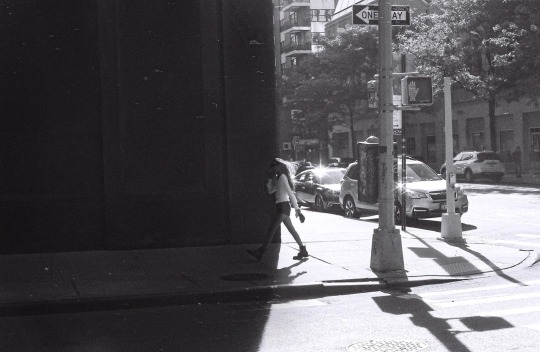
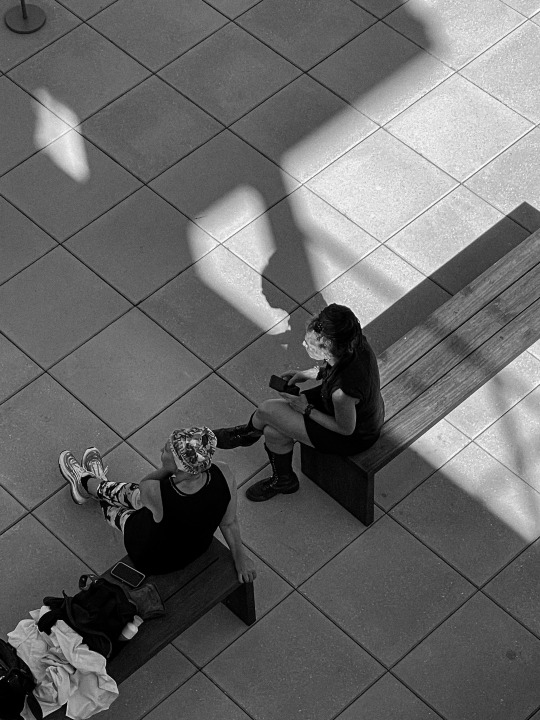
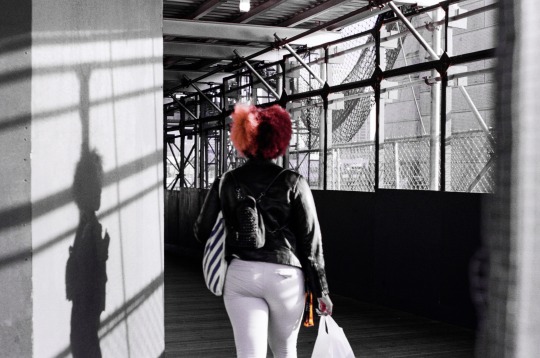
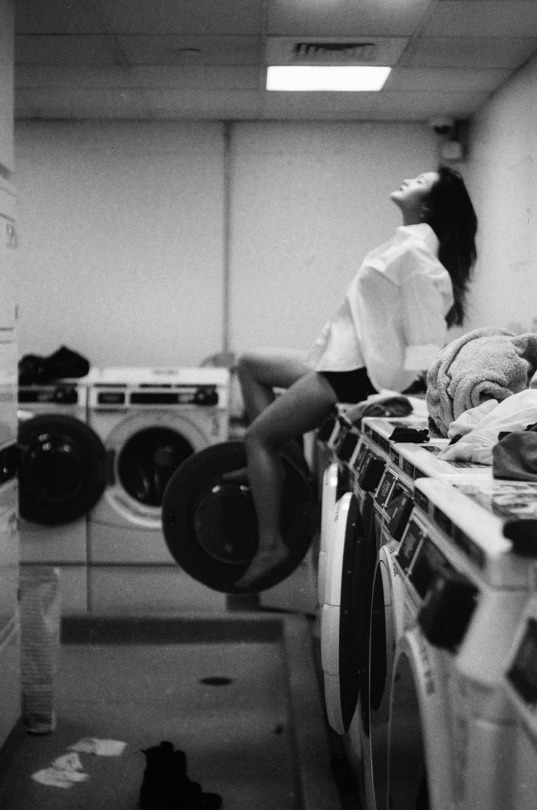
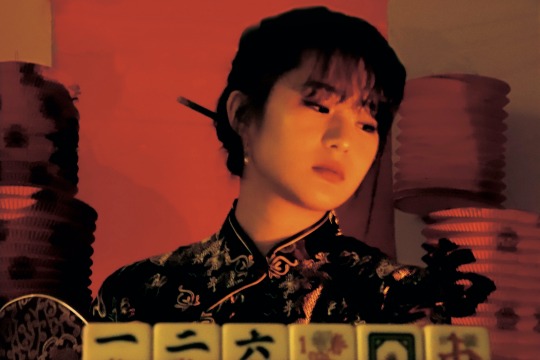

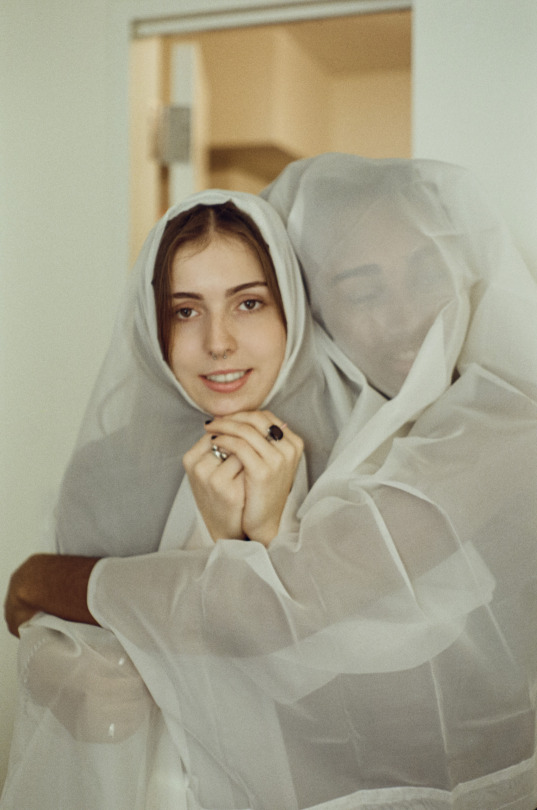
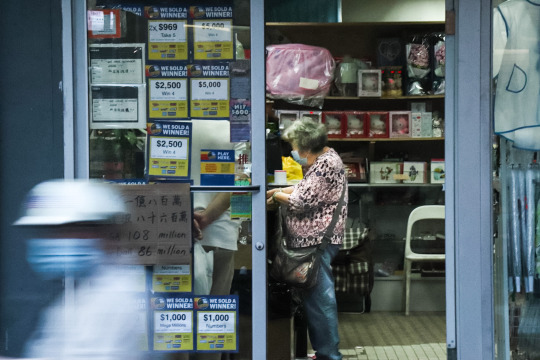
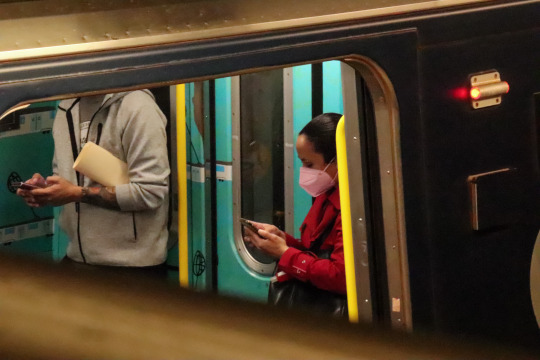
Final Project-- Rachel Wang
The theme of my final project is to present Female Identity.
We play a lot of roles in society as females, and will turn from a little girl, to a young woman, and eventually to an old person, but each stage of us has its uniqueness and beauty, with innocence, maturity, or benignity.
In others’ eyes, we are a good friend with company, a girlfriend with love, a mother with selflessness, a grandmother with amiableness, a lady with kindness, a worker on the way back home, a protestor fighting for women's rights, a culture inheritor, a customer, a reader.
But we always define ourselves in different ways as a person who is lonely and homesick, a person who needs cigarettes to relieve pressure, a narcissist, a procrastinator
Or liberalist, a female without being defined, with freedom, uniqueness, and beauty.
0 notes
Photo



Barry Zhang Final Project: Hello, this is a little preview of my project. Here’s my full project! https://drive.google.com/drive/folders/1RdO5xHnvWQ-NgCNAxU3ta8zi4V7pmboe?usp=sharing
0 notes
Photo
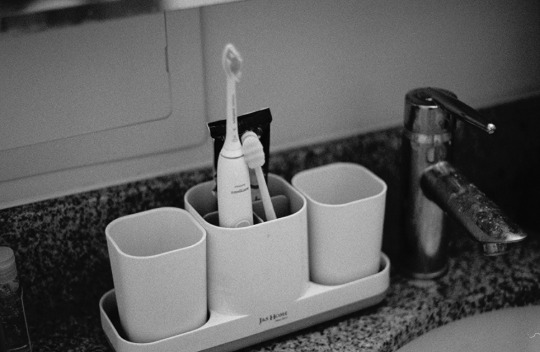
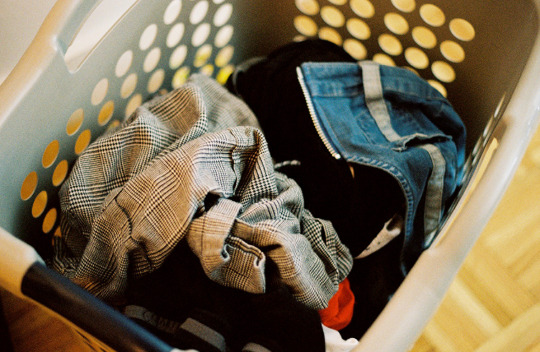
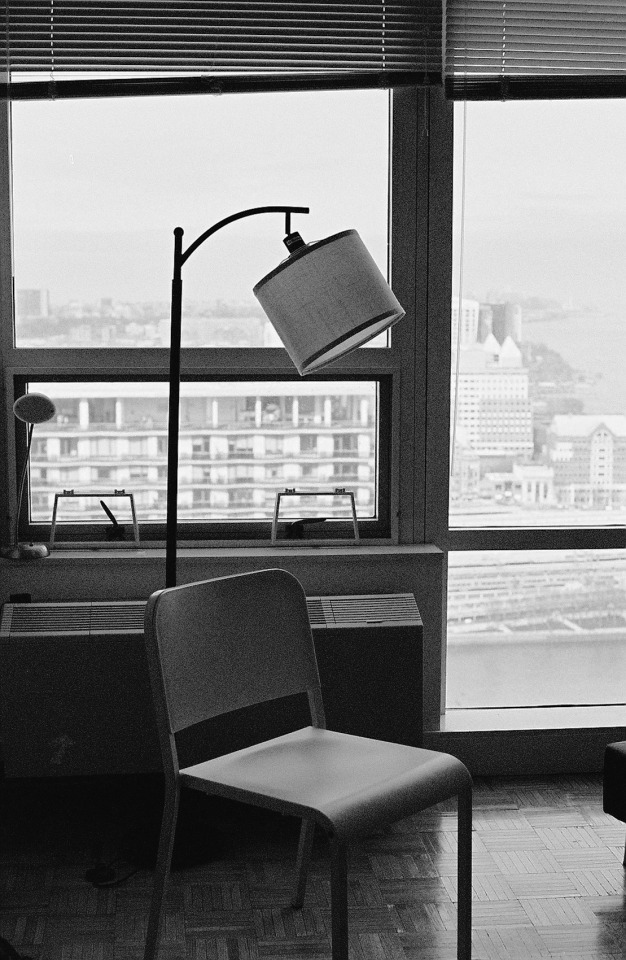
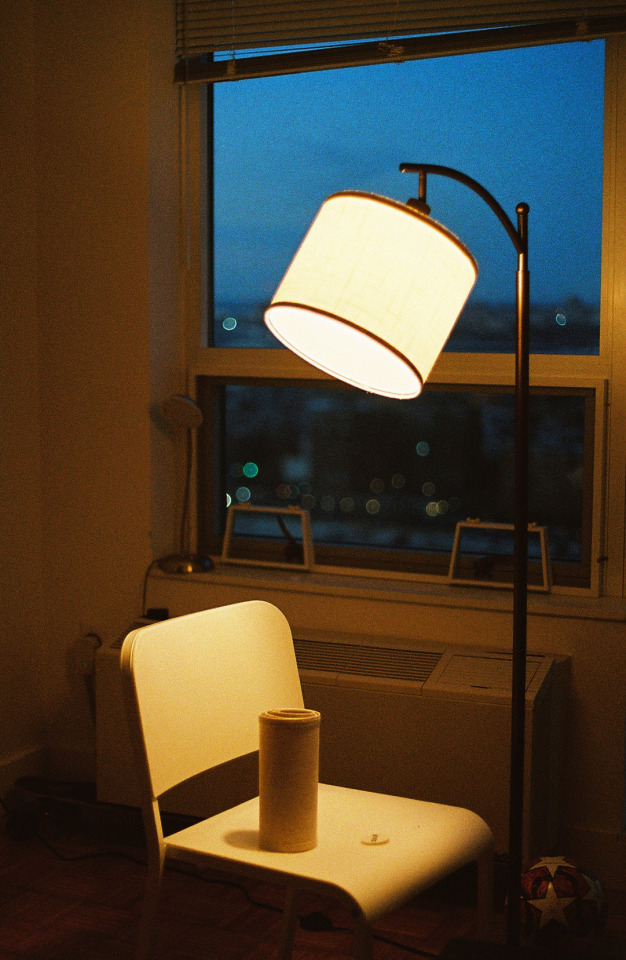




Final Project
Undercurrent - Gabrielle Gao
Undercurrent depicts and explores the intimate relationship between an urban couple. Just like an undercurrent beneath the contrary calm surface, there is passion, desire, adventure, and mixed feelings underneath the peaceful still life and the space they share together. Being in an intimate relationship feels like a dream in reality. The affection that surges under the blandness of everyday routine is enchanting and intoxicating. In creating this project, I used me and my boyfriend as my subjects, and observed and documented our daily interactions. For me, this connection is a unique experience that teaches me to look at things from different perspectives. It is an ideal state of an intimate relationship, and it’s existence is perfect.
https://drive.google.com/file/d/14jppshKzL1ihrla1yUGtqFE8hgJvmxig/view?usp=sharing
0 notes
Photo










Qolyndaryñ - Nartay Ualikhan
Faces come first whenever people mention “seen” parts of the body while overshadowing the essence of hands. However, they are as important in representing the mosaic of a person’s emotions to the outer world. Tones of the skin, their texture, and even cracks on them are integral particles of us that define our unique experiences.
“Qolyndaryñ” [Your hands] uses gesture as a subtle tool to connect all of the pictures into one perspective, but yet each photograph reflects its own story of identity formation individually.
In this series, I tried to unveil the stories of people from contrasting parts of the globe including North America, Europe, and Asia through the digital pictures I took on my long trip home. On an important note, each character is the inhabitant of the portrayed terrain to provide accurate environmental information. Having gesture in the focus, we leave the grandiose background in absorptive blur yet to be perceived.
0 notes
Photo

Final Project: Kristen Ong
POV NYC
Artist Statement
I spent a few months in New York before getting sent back home due to the pandemic. Ironically, that year I was separated from New York was the year I learned the most about what the city has done for me and my family. My dad immigrated in the late 80s, my mom followed suit in the early 90s, my sister is American and now lives and works in the city, my other sister has visited a few times, and I came here to continue my education.
If one family could produce this many stories, this made me think about just how different the New York stories of every single person that has set foot here is. Each and every person who has interacted with this city has a different story in it, all of which make up the story of the city itself. My own New York story was one that I did not expect and one that I find myself constantly thinking about now.
I have been here for four months straight now and with everything that happened before, these last 4 months have been overwhelming to say the least. 4 months of trying to rediscover and resculpt my New York narrative, 4 months of not knowing trying to figure out how one even does that. To try and figure it out, I turned to those around me to reconnect and learn more about this city and my place within it. I explored different streams of the New York narrative in an attempt to get to know the city I have a relationship with.
*This project is a compilation of moments in New York City shot in a variety of films. Kodak Colorplus 200 ASA film, Fujifilm Fujicolor C200 film, Ilford DELTA 3200 Professional film.
0 notes
Photo





Into the Music- Lexi Yob
My first concert I ever went to was Britney Spears. My dad took me and my sister, and while he still has the ticket stubs, I don’t have many memories from it. The first concert I really remember going to see is the Jonas Brothers. I’ve always loved attending live shows. Whether its Journey, the Arctic Monkeys, or One Direction, each artist brings their own energy, and each crowd is unique.
When I was asked to capture photographs at a Battle of the Bands, I was nervous. Multiple bands were counting on me to capture their sets, and concert photography can be difficult. The lighting is unpredictable, and the artists move quickly, making it necessary to not have too slow of a shutter speed while still allowing as much light as possible into the camera.
After the first preliminary round of the Battle of the Bands, I knew that I wanted to compile the photographs I had taken, for my final project. I was inspired by the music and the energy of the artists, and I wanted to create a tangible piece that would feature the event and the Backfires, who put the event together. Check out the zine and website along with the playlist for a full viewing experience. Turn the lights down and crank up some tunes to really be “into the music”!
https://lexiyob893b.myportfolio.com
https://open.spotify.com/playlist/4Gat0fQkAutKRuBJDc3OtP?si=e167d352dfff4850
0 notes
Photo










Zoe Yalden.
City of Stars and Broken Dreams
We all come to New York with a vision and a dream. Artists who come to New York City, including me, seek recognition for their work and constantly talk about the “hustle culture” but not about the thwarted ambitions or rejection. I aim for this series to highlight the consequences and harsh realities, especially for women, in such a competitive and saturated environment.
When I arrived in this city, I began reaching out to models, stylists and other artists to develop a portrait of both New York and the people in it. Each character in this series represents
feminine aesthetics that draw on old Hollywood images and include dream-like portraits of “starlets” wandering around New York City. However, each series transitions to the characters’ alienation and frustration at being typecast in a role that may have already passed them by.
The most difficult part of this session was capturing the more vulnerable side of each model since these women are conditioned to constantly smile and pose to portray the conventional old-Hollywood image. To depict the more complex narrative for this project, I tried to capture the in-between moments when they were fixing their hair, looking out into the distance or forgot that they were in front of the camera, if only for a moment. I decided to contrast these imperfect moments in a grid of black and white images with perfectly curated images of each model. These more vulnerable images are out of focus and messy but capture each characters’ vulnerability.
The first photoshoot took place at Grand Central Station, since the subway symbolizes the character’s move to New York to pursue their dreams, but also represents the wear and tear of the city (since subways are usually dirty and unkempt). The second photoshoot took place at Brooklyn’s Jane’s Carousel, a perfect setting, because of its association with youth, the infinity of circles and cycles, and unchanging patterns. The last two photoshoots were captured at Coney Island and at The Museum of Ice Cream since these are both colorful and dazzling settings that represent dreamers who inhabit “the city of dreams.” However, both locations are also kitschy, unconventional and outlandish, which represents the character’s crumbling self-image.
I drew inspiration from Blanche Dubois’s character from A Streetcar Named Desire and Roxy Hart’s character from the musical Chicago. Both are haunted by the possible failure of attaining the life to which they aspire. Behind the subjects’ veneer of pearls, tulle, and silk, they are insecure and dislocated individuals.
0 notes
Video
youtube
Virginia Morford
My negatives of birthday cakes always came back the best.
Decaying blue frosting of confetti colored tears I cried on another day I turned one year older.
Someone asked me if I felt wiser already but it had only been four hours
Since five am
The time my mom told me I was born but as the third child I'm still in disbelief she knows precisely.
I am still the same person from before five.
I will still listen to the somber song, my mind filled only with thoughts about the boy who I'll never know if he thinks about me too.
And the same person who spends endless tries of different clothing combinations
Only to feel the cold zipper of mid rise light wash Levis against my stomach for the third time this week.
My hair is still blonde at the ends, reminiscent of box dye two summers ago,
So I don’t seem any wiser don't you think?
I didn't lose my first tooth till seven.
It felt like I was the last person I knew to show a sign that I was aging.
The perfect tiny porcelain bone sat in my palm,
Not even a drop of blood came out with it, like my body wasn't sad to let it go.
The next morning a crisp five dollar bill and two ones lay underneath my pillow like my parents felt sorry I was behind on everything I thought was normal.
When I turned fifteen I had braces.
And I wondered if I would ever get to feel my tongue glide its way across my teeth again.
At seventeen
Alessio sent me a song that he said reminds him of that age,
like it was long ago.
I would sometimes forget that two years older seemed like a lot from his perspective.
The lyrics settled on my tongue easily and make me think about
my first kiss, and my hearing about my best friends too.
Pictures from six years old still make my all insides ache,
underneath my New York pale skin that makes my veins visible from the outside.
I say I love it here because I do,
But I hate missing the beach and my best friend whose house I sleep at Friday and Saturday nights.
I think about the guy who came into the cafe in July and how
I'm still embarrassed to wear my big winter jacket, like everyone will know I'm not from here.
My birthday is in June and i've never had it in the summer
But I suspect my friends at home will be around
and I'll take pictures of everyone's face that's changed a little.
It's hard to pinpoint the way people look different but I haven't seen Kyra since September so her dark hair will probably look longer.
I think about the pretty little forks we’ll have, next to a slice of chocolate cake with chocolate frosting
And the way it will taste exactly the same as every year before.
0 notes
Text
Renn Beard-Galati Mini Research Paper Sally Mann

“Family Pictures”, by Sally Mann is a family photo series that includes her children Emmet, Jessie and Virginia when they were young. Her photography is nationally recognized, and controversial for its content. She photographs the most intimate moments of her children, sometimes partially dressed (and naked) and her husband in the same state. Another body of work, “Body Farm” features shocking images of the dead decomposing at a university anthropology site.
Blake Morrison mentioned in his article “Interview Sally Mann: The naked and the dead”, “Sally Mann's Photography likes pushing buttons” and described by Time Magazine in 2001 as "America's best photographer", “she is nothing if not adventurous, ranging widely in subject matter and technique, but to most people she is known, if at all, for just one thing: "Oh, she's the one who photographed her children naked." (Source 1) Mann’s identity as a southern artist has a lot to do with her photographs taken in the rural landscape of Virginia, not too far away from where she grew up in the Blue Ridge Mountains. Her inspiration is heavily drawn from her immediate family, together with the land she grew up on. Qualities of her father are seen through her photography. He was a country doctor, and an artist in his spare time, who interpreted his art subjects in terms of sex, death and whimsy. Mann had an unconventional rural childhood- middle class but bohemian. Mann describes herself as a "feral child", running naked with her pets or riding her horse with only a string through its mouth, instead of a bridle.
My opinion of Mann’s work in general is the most honest work I’ve seen throughout my studies in this class. Her subjects are at their most authentic, which is where I disagree with public opinion of controversy attached to her work. She is a photographer but also their mother. Intimacy is inherent to motherhood. Mann just chooses to share these moments. The vibrant and touching themes of childhood and motherhood are interwoven throughout Mann’s work. Another theme most prominent in her photography is her connection with nature. Her family's home is a getaway, a world just for themselves. Mann’s photography is quiet, and is mostly shot during the day, where the sun in the morning or mid day casts the most beautiful of spells on her composition. There is a mystical glow and greyness in her work. Perhaps, similar to a child's imagination, Mann’s art is personal and challenges the norms of how we might perceive images of family life. In most of her work, the child is the centerpiece, while the landscape accompanies the image, as a beautiful backdrop, affirming the presence of her subject.
One of my favorite shots is of one of her daughters, as she is about to jump in the water. She puts her hands above her head in a “diving pose”using a quirky hand gesture. The detail of the image is in the vulnerability of her subject and the purposeful posing that her daughter establishes. There is a beauty to her stance and we share a moment of family intimacy that most often belongs without documentation.

The photo of her two boys lying down, one with a bloody nose and the other about to fall asleep is both shockingly honest yet uncomfortable to behold. There is a juxtaposition of beauty in her children and the problematic nature of capturing injury in her child instead of tending to it. And with this messaging there is yet another subject matter to behold in the sibling connection- as seen by the hand holding and matching sweaters. There’s a comfort here that manns has with her children, something as familiar to a child's connection to nature and wonder.
I relate a lot to this photo of her two girls playing with the mirror and beauty toys. This is very nostalgic, I also relate to the relationship of the two sisters, as I am an older sister- the dynamic of older sister vs. younger sister. Friendship and partnerships are all themes that appear in her photography. The toys are all scattered on the ground, while the dog is curious what they are doing. On a beautiful sunny day, the light shines off the leaves and glows in their blond hair. They are wearing their white dress barefoot in the mud; a disastrous beauty, but something that Mann loves to capture in her work and very family chaos like.
In Mann’s photo project “Body Farm”, she says in the interview with Blake Morrison, "Death makes us sad, but it can also make us feel more alive," she says. And continues “I couldn't wait to get there. The smell didn't bother me. And you should see the colours – they're really beautiful. As Wallace Stevens says, death is the mother of beauty.” (Source 1) What makes “Family pictures” and “Body Farm” so different from each other is the beginnings of life and the very end, decaying giving back to the earth that we live on.
The kids are connecting with nature for a reason, perhaps to reconnect with it when they pass? Nature Continues doing its work long after the body has become a carapace. These photos might be seen as gory but it's as real as anything in life, as real as her childs nude body. “Body Farm” are pictures of rotting corpses that certainly do that. She took them to the University of Tennessee’s anthropological facility at Knoxville, aka the “body farm,” where human decomposition is studied scientifically. The bodies are mostly left in an outdoor setting and lie there for months or even years.
In my opinion, looking at these images I think about how close living is to death, meaning that death could happen at any moment and as a result makes me admire the work of Mann's children even more. In “Body Farm”, some photos are in black and white and some are in color. They are as gory and neither has a different effect in my opinion. I do think that the images in color seem more realistic as you can see how the body is decomposing and identify those changes with color, weather that is blood through a cut, the color of their hair, or the blood stains on their body and the way their bodies have reacted to the ever changing environment around them.

1 note
·
View note
Text
Jason G. Ryan McGinley mini research paper

Jake (Cannes) 2005 - Sun and Health

Self Portrait (Polaroids) 1999 - The kids are alright
Jason A. Goodwin
11 November 2021
Ryan McGinley: The Kids Are Alright / Sun & Health
Ryan McGinley was born in 1977 In Ramseys, New Jersey, the youngest of eight children. Ryan was drawn to a cast of graffiti artists, skateboarders, and musicians who were "outsiders" on the fringe of society's mainstream. In 1997 he enrolled at Parsons School of Design with a focus in graphic design. McGinley lived in Manhattan's East Village neighborhood throughout his formative years as an artist. This downtown influence can be directly correlated to his first collection of images; The Kids are alright.
These images were curated in a self-made photo book published by the artist in 1999. The series began as spontaneous, candid shots of his friends and the group's lifestyle. These snapshot images turned into a slice of life series. That became known as "iconic snapshots of a generation," as stated by the Whitney Museum, who picked up the series in 2003. McGinley's work became a part of their First Exposure series, making McGinley the youngest artist to have a solo exhibition at the institution at age twenty-five. The series depicts young, sometimes nude, beautiful kids performing acts like raving, smoking, running, jumping, and shoplifting. Sylvia Wolf picked up and organized McGinley's solo exhibition at the Whitney. Wolf wrote said the following about McGinley in an essay "The skateboarders, musicians, graffiti artists and gay people in Mr. McGinley's early work 'know what it means to be photographed. [...] They are savvy about visual culture, acutely aware of how identity can be not only communicated but created. They are willing collaborators." Rebellion is a word that comes to mind when thinking of ways to describe the series. I will be putting The Kids are alright in conversation with McGinleys junior series Sun and Health (2006) a more constructed series with his subjects knowingly taking part in the creation of a image whereas in his earlier work has a more spontaneous, immediate, snapshot feeling.
Sun and Health is a series similar to The Kids are alright with a different attitude. The similarity in style comes from McGinley's familiarity with his subjects. McGinley photographed the project over summer road trips as he traveled across the United States, capturing his friends, sometimes nude with natural backdrops of nature and light behind them. McGinley is orchestrating scenes according to his creative vision. Since 2004, McGinley's style has evolved from documenting his friends in real-life situations towards creating envisioned situations that can be photographed. In 2007, critic Philip Gefter wrote, "He was a fly on the wall. But then he began to direct the activities, photographing his subjects in a cinema-verite mode." McGinley is photographing his friends still in a carefree, liberated fashion. Still, they engage in boating, rolling down dunes, and running through open fields. This series Sun and Health has turned into an annual occasion for the artist. In conversation with filmmaker Gus Van Sant, McGinley described his practice of making photographs on the road "Such a big part of what I do is removing myself and other people from the city—taking people to these beautiful and remote locations, being together for long periods of time, getting that intimacy, and doing all these intense activities together every day. In a way, it's like a bizarre summer camp or like touring in a rock band or traveling circus. It's all those things combined. Just taking everyone out of their element so you have their full attention."
In The Kids Are Alright, McGinley's intimate photographs are framed in self-discovery, free from shame or labels. For example, Self Portrait (Polaroids) 1999 is a photograph of McGinley and a friend nude on a bed with a wall of polaroids behind them. A wall of visitors that have come through the artist's apartment. The way McGinley is piled atop his friend feels like it was done in a cheerful self-awareness that reduces the sexuality of his image, allowing them to be viewed as honest, not pornographic or voyeuristic. This image beautifully illustrates McGinley's ability to capture a sense of liberation and indulgence in his early work, which attracted the attention of a more buttoned-up and formal art world.
Sun and Health has a similar process to the realization of The Kids are Alright. McGinley shot his friends with some images more staged than others while traveling across the country in the summer of two thousand five. This series feels equally liberating and joyous as The Kids are Alright, if not more. The color is rich, and the photographs have a sense of movement that leans into the carefree youthful feeling that felt like a focus in Mcginleys freshman series. The subjects are photographed nude as they frolic through fields and swim in lakes captured by McGinley with softness and respect that feels mutual and similar to his previous work. One photograph that spoke to me is the "Jake (Cannes)" from the series. The image is a moment captured of McGinley's friend Jake climbing a ladder emerging from the water with a twisted look on his face. I found that the two series are closely connected with a slight change of point of view. Sun and Health feels more controlled and planned with where The Kids are alright had a quick and spontaneous feeling.
Bibliography
Gefter, Philip. “A Young Man with an Eye, and Friends up a Tree.” The New York Times, The New York Times, 6 May 2007, https://www.nytimes.com/2007/05/06/arts/design/06geft.html.
“Gus Van Sant, 2012.” RYAN McGINLEY, https://ryanmcginley.com/gus-van-sant-2012.
“Sylvia Wolf, 2012.” RYAN McGINLEY, https://ryanmcginley.com/sylvia-wolf-2012.
6 notes
·
View notes
Photo

Mini-Research Paper -- Gabrielle Gao
A Brief Introduction to Visual Arts Administration
The arts have developed from merely forms of self-expression and self-fulfillment to a highly industrialized business. In her book The Public Life of the Arts in America, arts sociologist Joni Maya Cherbo proposed “The Art Product Cycle” as creation, production, distribution, consumption, and conservation. In the context of visual arts, creation is the process of artists, such as painters, photographers, designers, creating the artwork. Production is where the creative process takes place, and it is usually the artists' studios. Distribution is the process of pushing the artwork and the artists to the public, and it is usually the job of museums, galleries, and dealers. Consumption involves collectors, clients, viewers, and visitors consuming the art, and conservation brings in conservation institutions, galleries and museums, and personal collections to help preserve the artwork. In the product cycle, distribution acts as a medium that connects the arts or artists with the greater audience, and that is where arts administration comes into place. Emerged in the 1960s in the US, arts administration is the management of arts and culture organizations generally including functions as marketing, fundraising, budgeting and financial management, board relations, management of staff and volunteers, program planning and evaluation, and education. This paper examines both nonprofit and for-profit arts organizations to see how they organize the arts and artists as a business.
Nonprofit organizations are driven by missions, which are the guiding principles and public purposes of the organizations. Any revenue generated by organizational activities must be committed to the organizational purposes. Take Whitney Museum of American Art as an example. Whitney’s mission is stated as the following. “The Whitney Museum of American Art seeks to be the defining museum of twentieth- and twenty-first-century American art. The Museum collects, exhibits, preserves, researches, and interprets art of the United States in the broadest global, historical, and interdisciplinary contexts. As the preeminent advocate for American art, we foster the work of living artists at critical moments in their careers. The Whitney educates a diverse public through direct interaction with artists, often before their work has achieved general acceptance.” The mission statement shapes Whitney’s personality to specifically focus on American art in the past century and present, and its collections reflect the museum’s ardent support of living artists of the time, especially young and emerging artists. Whitney collects artworks through donations and direct purchases, and it has acquired over 25,000 works from more than 3,600 artists to its permanent collection. Curators choose artworks from its collection to exhibit, and the museum also collaborates with other institutions or features specific artists to enrich its exhibitions. Artists can send written materials and reproductions to the curatorial department if they want their work to be considered by the museum. Whitney also promotes the exhibition and the artist through a series of events. When “Dawoud Bey: An American Project” was in exhibit from April to October this year, Whitney organized weekly events on the exhibition, ranging from curator overviews to artist interviews.
For profit venues in the visual arts world include commercial galleries and dealers, auction houses, and art fairs. For profit organizations are driven by financial interests, and their primary goal is to return profits to their investors. In the primary market, commercial galleries operate like any entrepreneurship that work towards a goal, which resembles the missions for nonprofit organizations. They usually sign up and represent artists, and promote the artists and artwork to the secondary market, which involves collectors and auction houses. Miyako Yoshinaga is a commercial gallery that “showcases international artists with a focus on innovation.” Although the gallery operates on a small scale, it represents 20 artists from contemporary artists to photography artists. It constantly researches potential artists and clients, and organizes art fair events for artists and buyers to meet up. It also promotes project programs like micro online exhibitions and monthly workshops featuring various topics in the arts industry. If exhibitions in the Whitney Museum serve more of educational and social purposes, then Miyako Yoshinaga exhibits artists’ works to attract collectors and buyers. The gallery also translates contemporary art, appraises collections, arranges museum acquisitions for artists, and offers art consulting for private and corporate clients.
The arts industry is a large ecosystem, and arts administration is the adhesive that connects the generators and the consumers. Arts institutions and administrators serve the artists so that their creations can be recognized by the greater audience, and take on the responsibility of promoting and educating arts to the general public. Just like the arts itself, arts administration is an important and indispensable part in the world of art.
Bibliography
Cherbo, Joni Maya, and Margaret Jane Wyszomirski. The Public Life of the Arts in America. New Brunswick (N.J.): Rutgers University Press, 2000.
Chong, Derrick. Arts Management. London: Taylor & Francis Group, 2010. Accessed November 10, 2021. ProQuest Ebook Central.
Bathurst, Jessica, and Stein, Tobie S.. Performing Arts Management: A Handbook of Professional Practices. New York: Allworth Press, 2008. Accessed November 10, 2021. ProQuest Ebook Central.
“Mission & Values.” Whitney Museum of American Art. Accessed November 10, 2021. https://whitney.org/about/mission-values.
“History of the Whitney.” Whitney Museum of American Art. Accessed November 10, 2021. https://whitney.org/about/history.
“FAQ.” Whitney Museum of American Art. Accessed November 10, 2021. https://whitney.org/about/faq#exhib11.
“About.” Miyako Yoshinaga. Accessed November 10, 2021. https://miyakoyoshinaga.com/about/.
0 notes








